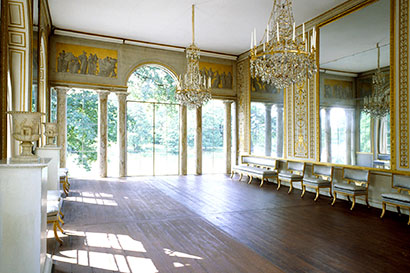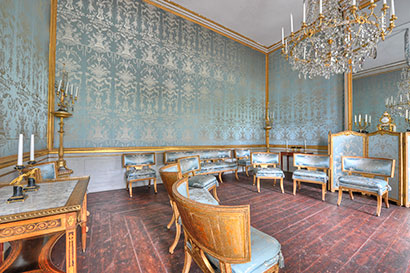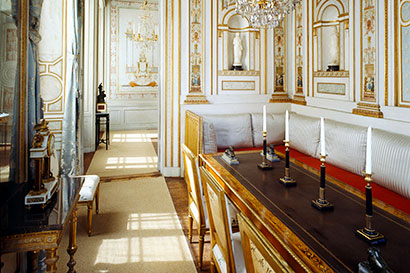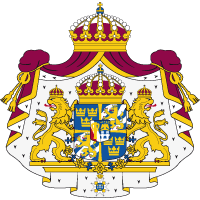The Pavilion
Gustav III’s pavilion at Haga is, from a European perspective, one of the most unusual royal buildings from the late 18th century. Not least because of its interior decoration.
From a European perspective Gustav III's Pavilion at Haga Park is one of the finest examples of a palace building from the late 1700s. Its magnificent interior adds to the building's importance.
Architect Olof Tempelman drew up the plans for the pavilion in 1787 and the interior design was carried out by Louis Masreliez. Masreliez had studied for several years in Italy and was closely familiar with Roman antiquity.
An interest in Roman antiquity grew during the 1780s on the continent following the famous excavation of Pompeii and Herculaneum. The new interior design trend became know as Pompeian.
Both the fashion-conscious monarch Gustav III and Louis Masreliez had visited the excavations of these ancient cities. Therefore the state room in the pavilions parade suite was decorated in Pompeian style, which with its richness of detail was a strong contrast to the more traditional fastidious interiors of the period.
This well-preserved interior can be viewed during the summer months by guided tour.
Photo: Jens Lindhe/Royalpalaces.se

The Hall of Mirrors. The architect Olof Tempelman designed the pavilion in 1787, and the interior decoration was directed by Louis Masreliez. Photo: Alexis Daflos/Royalpalaces.se

The Blue Drawing Room. The rooms at King Gustav III's Haga home show the extraordinarily high quality that typifies Gustavian interiors. Photo: Gomer Swahn/Royalpalaces.se

The divan. During the summer months, the interior of the pavilion can be seen during guided tours. Photo: Alexis Daflos/Royalpalaces.se









